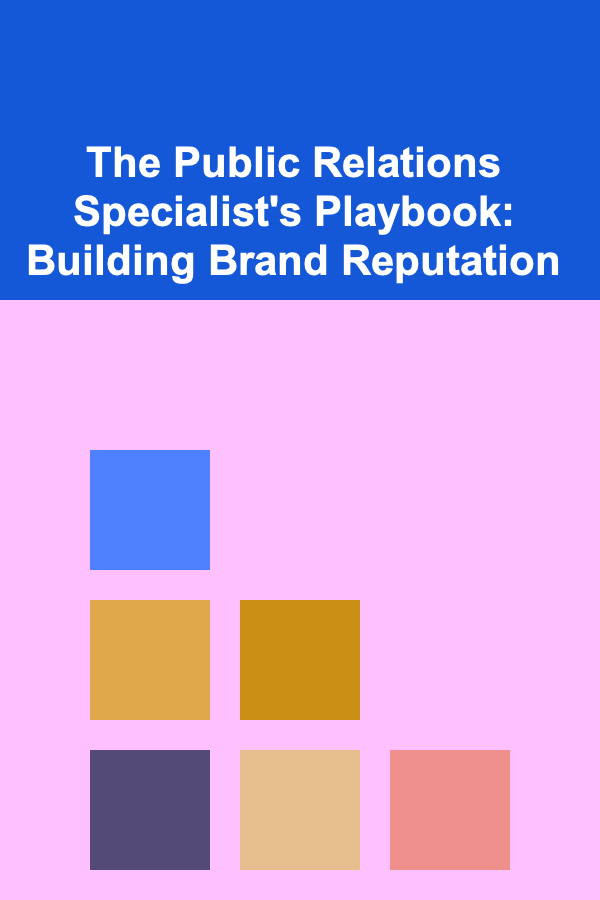
How to Develop a Language Learning Curriculum for Your Students: An Actionable Guide
ebook include PDF & Audio bundle (Micro Guide)
$12.99$10.99
Limited Time Offer! Order within the next:

Designing an effective language learning curriculum is a crucial task for educators aiming to help students master a new language. A well-thought-out curriculum provides structure, engages students, and ensures they progress steadily through the language acquisition process. However, creating such a curriculum requires more than just picking textbooks or setting up lessons; it requires a deep understanding of language learning principles, pedagogical strategies, and the needs of your students.
This guide will walk you through the steps to design a comprehensive language learning curriculum that is both practical and engaging. From understanding the theoretical underpinnings of language acquisition to creating lesson plans that align with student goals, you'll learn how to design a curriculum that fosters growth and keeps students motivated.
Understand the Goals of Language Learning
Before you dive into the practicalities of curriculum design, you must clearly define the overall goals of language learning for your students. These goals will shape the structure and content of the curriculum, ensuring that all aspects of language acquisition are covered.
Key Goals to Consider:
- Communication Competence: The primary goal of learning any language is to be able to communicate effectively. This involves not just understanding the language but also using it in real-life situations.
- Cultural Understanding: Language is intrinsically linked to culture. A successful curriculum should expose students to the cultural contexts in which the language is spoken, including customs, traditions, and social nuances.
- Literacy Development: This includes the ability to read and write in the target language, expanding students' skills beyond speaking and listening.
- Cognitive Skills: Language learning helps develop cognitive skills, including memory, problem-solving, and critical thinking. A good curriculum should cater to these needs, making students more adaptable learners.
By establishing clear objectives, you can create a curriculum that addresses all aspects of language learning: speaking, listening, reading, writing, grammar, vocabulary, and culture.
Assess Student Needs and Proficiency Levels
Understanding your students' needs, interests, and proficiency levels is essential in developing a language curriculum that resonates with them. Every student is different, and tailoring your curriculum to their backgrounds and goals will ensure better engagement and success.
Steps for Assessing Student Needs:
- Initial Placement Tests: Administer language proficiency tests at the start to understand where each student stands. These tests should evaluate speaking, listening, reading, and writing skills to provide a holistic view of their abilities.
- Survey Students' Interests: Gather information about what motivates your students to learn the language. Are they learning for travel, work, or cultural immersion? Understanding their personal reasons for learning can help you design relevant lessons that cater to their motivations.
- Consider Learning Styles: Some students may prefer visual aids, while others learn best through auditory or kinesthetic activities. By incorporating diverse teaching methods, you can address different learning preferences and ensure all students are engaged.
- Analyze Age and Background: A language curriculum for adults may focus more on professional language and conversational skills, while younger students may require a more playful and interactive approach.
By carefully assessing these factors, you can create a curriculum that is adaptable and aligned with your students' needs.
Create a Clear Scope and Sequence
A successful curriculum needs to have a clear scope (the content covered) and a logical sequence (the order in which concepts are taught). Establishing this structure helps ensure that students acquire language skills in a gradual, cumulative way. This is particularly important for beginners, as they need to build foundational knowledge before moving on to more complex concepts.
Building the Scope and Sequence:
- Start with Basic Communication: Begin with everyday vocabulary and phrases that allow students to engage in basic conversations. This could include greetings, asking for directions, ordering food, and other practical situations.
- Introduce Grammar Gradually: Start with simple sentence structures and progressively introduce more complex grammar rules. This might include learning verb conjugations, noun-adjective agreements, and prepositions.
- Integrate Vocabulary Expansion: Introduce vocabulary that students can use in multiple contexts. For instance, while teaching about food, incorporate adjectives, verbs, and cultural vocabulary related to food and dining.
- Cultural Context: Embed cultural lessons throughout the curriculum. For instance, when discussing holidays or traditions, introduce relevant language structures and vocabulary that relate to those cultural events.
- Skill Progression: Ensure that the four core language skills---speaking, listening, reading, and writing---are developed simultaneously, with increasing complexity. For example, listening activities may begin with simple dialogues and gradually advance to more complex monologues or podcasts.
An organized scope and sequence will give students a sense of progression and make it easier for you to track their development.
Design Engaging and Varied Activities
To make your language curriculum effective and enjoyable, you need to incorporate a variety of engaging activities. Active learning, rather than passive absorption, is essential for language acquisition. Creating diverse activities not only helps reinforce the language but also keeps students motivated and engaged throughout the process.
Types of Activities to Include:
- Interactive Conversations: Language learning is about communication, so include role-playing exercises, group discussions, and peer-to-peer interactions. These activities help students practice speaking and listening in authentic contexts.
- Games and Challenges: Games such as crossword puzzles, word searches, or language quizzes can help reinforce vocabulary in a fun and engaging way. For example, you might use a flashcard memory game to reinforce newly learned words.
- Audio and Video Materials: Incorporating audio clips or videos will expose students to native speakers and authentic accents. This also helps improve listening comprehension and familiarizes students with the rhythm and tone of the language.
- Writing Exercises: Encourage students to write short stories, diary entries, or even social media posts in the target language. Writing not only helps reinforce vocabulary and grammar but also enhances students' ability to express themselves.
- Cultural Immersion Activities: Organize field trips, virtual museum tours, or watch films and documentaries in the target language to give students a deeper understanding of the culture.
A diverse array of activities ensures that students remain engaged and excited about their language learning journey while reinforcing important language skills.
Incorporate Assessment and Feedback Mechanisms
Regular assessments and feedback are crucial in any language learning curriculum. They provide insights into how well students are mastering the language and where they may need additional support. However, assessments for language learning should not only be formal exams but also informal checks for understanding, self-assessments, and peer feedback.
Types of Assessment:
- Formative Assessment: These are ongoing assessments throughout the course, such as quizzes, oral presentations, and written assignments. They provide valuable feedback on a student's current level and help identify areas for improvement.
- Summative Assessment: At the end of a unit or course, a more formal assessment can gauge a student's overall proficiency. This could include a final exam or a project that demonstrates their ability to use the language in a real-world context.
- Peer Feedback: Encouraging peer feedback can help students develop critical thinking and self-assessment skills. Group activities or presentations can include peer reviews, where students evaluate each other's language skills and offer constructive suggestions.
- Self-Assessment: Empower your students by giving them the tools to track their own progress. This can be done through reflective journals, self-assessment checklists, or language proficiency scales (e.g., the CEFR levels).
Assessment should be an ongoing process that supports student growth, provides meaningful feedback, and identifies areas for improvement.
Adapt for Differentiation and Inclusivity
No two students learn the same way, so a good language curriculum must be adaptable to a variety of needs. Whether students are beginners, advanced learners, or have special learning needs, your curriculum should offer flexibility in how material is presented and assessed.
Strategies for Differentiation:
- Varying Pace: Some students may need more time to master certain concepts, while others may progress more quickly. Offer additional resources and challenges for advanced learners while providing extra support for struggling students.
- Visual Aids and Technology: Use visual aids such as charts, flashcards, and diagrams to support visual learners. Additionally, incorporate language learning apps or software that offer interactive learning opportunities.
- Provide Scaffolding: For struggling learners, scaffold lessons by breaking tasks into smaller, manageable parts. For example, introduce vocabulary in stages and provide context before requiring students to use it in sentences.
- Modify Assignments: Adjust the complexity of assignments to suit different proficiency levels. For example, beginner students may be asked to write simple sentences, while advanced students may write essays or engage in debates.
Incorporating these strategies ensures that all students, regardless of their learning needs, have the opportunity to succeed.
Conclusion
Developing a language learning curriculum requires careful thought, flexibility, and attention to your students' needs and goals. By understanding the fundamental principles of language acquisition, assessing student levels, creating a structured yet adaptable curriculum, and using diverse teaching methods, you can create a learning environment that fosters language proficiency and excitement. A well-designed curriculum not only equips students with the necessary skills to communicate but also inspires them to embrace the language as a tool for deeper cultural and personal exploration.
Reading More From Our Other Websites
- [Ziplining Tip 101] Bucket List Worthy: The World's Most Thrilling Zipline Experiences
- [Personal Care Tips 101] How to Choose Hand Cream for a Non-Tacky Finish
- [Home Budget 101] How to Budget for Home Appliances: Tips for Buying Smart and Saving Big
- [Home Storage Solution 101] How to Organize Your Digital Devices and Cables with Storage Hacks
- [Home Budget 101] How to Save Money on Internet and Cable: 5 Tips for Cutting Costs Without Losing Value
- [Organization Tip 101] How to Keep Digital Files Organized for Easy Access
- [Personal Care Tips 101] Managing GERD Without Medication: A Comprehensive Guide to Dietary Tips
- [Home Staging 101] How to Arrange Furniture and Decor When Staging a Dining Room for Optimal Flow
- [Organization Tip 101] How to Incorporate Natural Elements into Bathroom Organization
- [Home Budget 101] How to Save on Energy Costs by Implementing Budget-Friendly Solutions

How to Avoid Common Mistakes in Home Renovation Projects
Read More
How to Budget for Home Maintenance and Avoid Costly Repairs
Read More
How to Set Up AR Product Visualizations on Your Dropshipping Website
Read More
How to Use Foam Panels for Sound Absorption
Read More
The Public Relations Specialist's Playbook: Building Brand Reputation
Read More
Choosing the Right Gaming Console for You: A Deep Dive
Read MoreOther Products

How to Avoid Common Mistakes in Home Renovation Projects
Read More
How to Budget for Home Maintenance and Avoid Costly Repairs
Read More
How to Set Up AR Product Visualizations on Your Dropshipping Website
Read More
How to Use Foam Panels for Sound Absorption
Read More
The Public Relations Specialist's Playbook: Building Brand Reputation
Read More